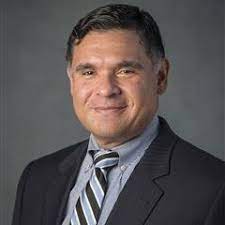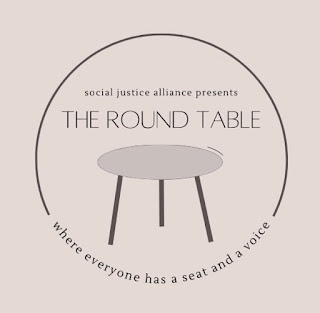Why might the new 3 feet social distancing guidance result in more close contacts?
While the guidance has changed from six feet to three feet, the manner in which students are quarantined has not. Thus any student who is within three feet of another student for fifteen minutes or more will need to be absent from school and all activities for seven days and a test. Based on the large number of cases in Chittenden County, it is likely that we would be bringing kids back to school only to send them home. Families who have experienced this quarantining describe the disruption for their child and themselves as quite substantial. So far about 1 in every 16 CVSD students has been quarantined!
Is Covid-19 spreading at school?
Our schools are a reflection of our communities. As community spread ticks up in Chittenden County, we’ve seen a corresponding increase in cases coming into our school buildings. And while our mitigation efforts continue to prove effective at stopping the spread once it enters our buildings, we have seen two cases of what the Department of Health deems an outbreak. By definition, this is three or more cases within the school that could not have been contacted outside of school. Our positive cases have been linked to household transmission with the most common pattern being transmission from an adult to a child living in the same household.
If there is in-school transmission, will we be notified?
In an in-school transmission or an outbreak (three or more cases linked together) is confirmed by the Epidemiology Team, the school is required to notify the families and take appropriate steps suggested by the Department of Health. We also notify the entire school community as a regular practice.
Do all close contacts have to quarantine for the same length of time? It seems some individuals are out for fewer days than others.
The timeline for quarantining has been established by the VT Department of Health based on current research and understanding of the incubation period of the virus and how it spreads. In Vermont, we rely on a team of contact tracers who interview the positive person to establish the individual timeline for each COVID case. Based on that individual’s timeline, the school team works with the Dept. of Health to determine what the necessary quarantine, testing, and remote timelines will be.
Though each case is unique, all individuals identified as close contacts are required to quarantine for seven days from the last day of possible exposure to the person who was infectious (known as day zero). At that point, they must take a PCR Covid test and remain in quarantine until negative results are received. These negative results must be shared with the health office before the individual is allowed back in school. Due to the particulars of a case, the exposure is sometimes not known until days after it occurred. In such cases, there may be different amounts of school days missed.
Is the quarantine requirement consistently applied?
Yes, the quarantine requirement is consistently applied as directed by the VT Department of Health.
What is the school doing to prevent transmission at school?
Our schools continue to be diligent with our protective measures to prevent the spread of Covid-19. We believe that the following measures are effective in containing transmission at school:
- Mask wearing by all with very few exceptions for individuals for whom mask wearing is contraindicated in the Individualized Education Plan
- Maintaining 3 feet distancing between students and 6 feet distancing between adults
- Washing hands routinely throughout the day
- Availability of hand sanitation stations in all common areas
- Sending symptomatic students home as soon as symptoms present themselves
- Maintenance of student groupings and seating charts to minimize contacts
- Closing the buildings to the public
The social distancing guidance is a recommendation. Schools are asked to consider local conditions and circumstances as well as the social distance criteria. Quarantining requirements are handed down by the VT Department of Health and the Agency of Education. Here is the response we received when we asked about our ability to require families who have traveled out of state to quarantine while they awaited a negative COVID test result:
Can schools decide to require quarantining after travel for students/staff even though Vermont Forward has removed this?From Secretary French: No they cannot. They are to follow Vermont Forward and state guidance. School districts do not have the authority to arbitrarily deny students access to in-person instruction.What is the Vermont Forward guidance relative to travel out of state?Families who travel out of state are required to get a COVID test three days after return to Vermont. Students may return to school while they are awaiting their test results. If a student is symptomatic, they should self-quarantine.What is the guidance relative to travel out of the country?Families who travel out of the country are required to quarantine for fourteen days or seven days with a negative test result.
What activities occur on Wednesday remote days?
- Synchronous Learning
- Asynchronous Learning
- Office hours with students
- Parent meetings
- EST and 504 meetings
- Assessments
- Teacher Planning
- Cross-disciplinary, team teacher planning
- Staff professional learning
- Staff meetings
- Reopening/ Recovery/ Summer Planning
From Principal Bunting:
Right now, the main concern is losing more instructional days than we would gain if we made a full return. While the CDC guidance on social distancing has changed from six feet to three feet, the manner in which students are quarantined has not. Thus any student who is within six feet of another student for fifteen minutes or more will need to be absent from school and all activities for seven days and a test. One positive case would result in a minimum of twenty-one other students missing up to five days of instruction. Based on the increase of cases in Chittenden County, it is likely that we would be bringing kids back to school only to send them home. Families who have experienced this quarantining describe the disruption for their child and themselves as quite substantial. So far about one in every sixteen CVSD students has been quarantined!
Is CVU doing anything to add in-person time for high school students?
CVU is looking for ways in which to increase in-person time as the school year progresses. Starting after April break they will allow any student who wishes to come in for academic support to do so. Additionally, they will have ninth graders in for three of the six remaining Wednesdays for the remainder of the year. They are planning a traditional senior week to get seniors back in school before the close of the year. Finally, CVU will offer many free summer opportunities to all students; those opportunities will include courses, camps, and social experiences.
What is the plan/ intention for the fall?
We are planning a full reopening in as near-normal as possible. We imagine that we will still be wearing masks, but expect that the school schedule, routines, and practices will be back to pre-COVID operations. We are planning for, and looking forward to this eventuality.







